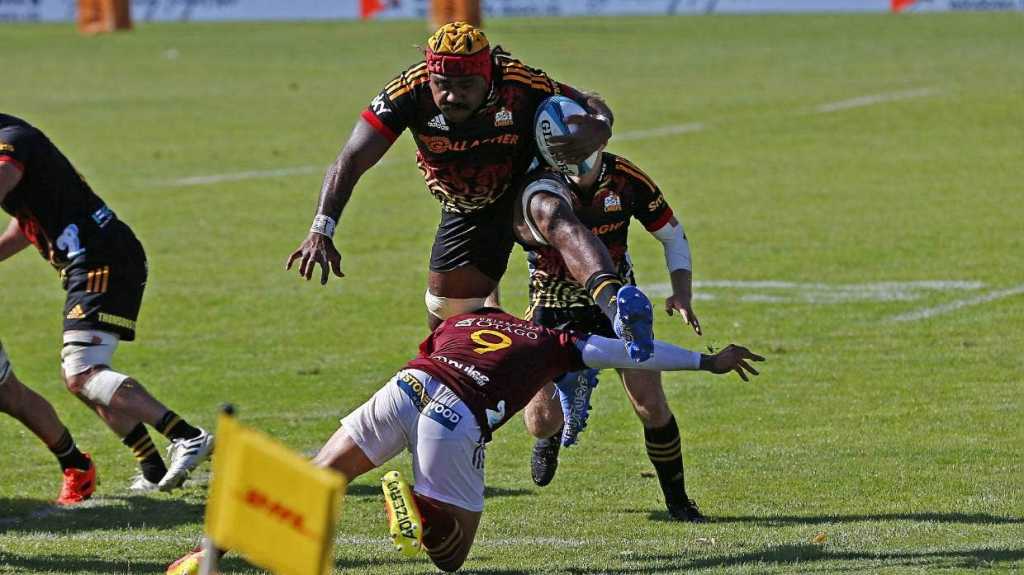
Anyone wanting to copy Pita Gus Sowakula’s stunning hurdling try is out of luck, with World Rugby ruling that jumping over opponents will now be deemed illegal.
The Chiefs No 8 scored an athletic five-pointer in his side’s opening-round Super Rugby Pacific win over the Highlanders in Queenstown, leaping above the attempted tackle of Aaron Smith on his way to the line.
But it was a play that courted controversy post-game, with punters divided on whether referee Paul Williams should have awarded the try, considering the potentially dangerous nature of the play.
However, there was nothing specific in the laws of the game to rule against it, and so New Zealand Rugby national referee manager Bryce Lawrence sought clarification from World Rugby as to how it should be ruled in future.
Needing to give teams an answer by last Wednesday on how they planned to rule such an act should it arise in round two, officials told coaches the hurdling wouldn’t be allowed, as they waited for confirmation from World Rugby.
Now, ahead of round three this weekend, the governing body has on Tuesday come back with official word, issuing a ‘clarification in law’ to all member unions, for all levels of the game.
“We agree – jumping to hurdle a potential tackler is dangerous play, as is the act of a ball carrier jumping into a tackle,” the official statement read.
“Even if no contact is made, we believe this act is in clear contravention of law 9.11, and runs contrary to the game-wide focus on player welfare.
“In this specific case [of Sowakula] the sanction should be a PK [penalty kick] against the ball carrier.”
Lawrence also asked World Rugby, for comparison’s sake, their take on Jonny May’s acrobatic try for England in their Six Nations win against Italy last year, where the winger leapt for the line from about five metres out, and over the clutches of Luca Sperandio.
It was an incident which at the time even had two former test referees – Nigel Owens and Jonathan Kaplan – disagreeing as to its legality, particularly in the sense that if a ball carrier gets airborne it then makes it impossible for an opponent not to make a mid-ar tackle.
The governing body responded, outlining the clear differences which should see the two incidents separated:
“A ball carrier may dive with the ball in order to score a try, and we all agree that should be allowed. From an equity perspective, if they do so, a defender may attempt to make a safe and legal tackle on that player.
“As we have said above, jumping to avoid a tackle should be regarded as dangerous play and should be sanctioned accordingly, even if no contact is made.
“Player welfare should remain the priority deciding factor for match officials in these very rare situations. In such instances as this rare example, which involves great player skill and dexterity, match officials have to make a judgement call as to which actions have taken place. If there is any element of dangerous play, in line with the above ruling, then a try cannot be the reward.
“In principle, in a try scoring situation, if the action is deemed to be a dive forward for a try, then it should be permitted. If a player is deemed to have left the ground to avoid a tackle; or to jump, or hurdle a potential tackler, then this is dangerous play and should be sanctioned accordingly.”
- Stuff.co.nz
The free space for going forward is available airborne. Disallowing hurdling will affect the Go Forward principle.